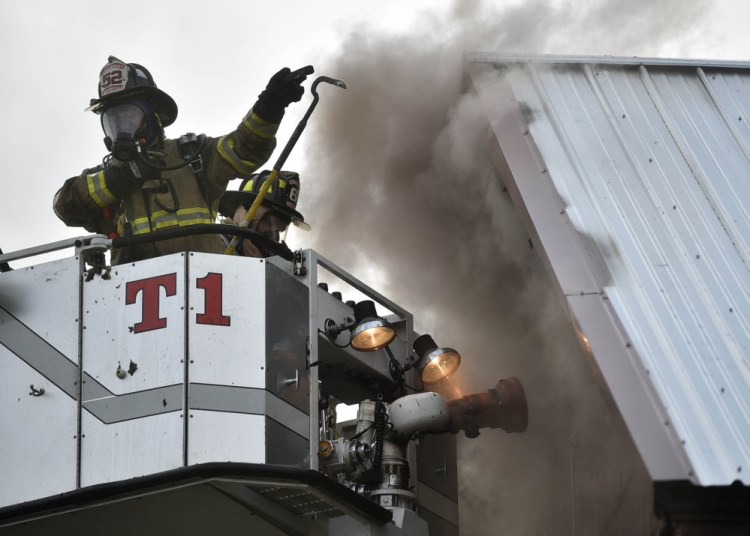As any firefighter will tell you, it’s the smoke – not the fire – that poses the real danger in a burning building. And that danger doesn’t end when the last ember has been extinguished and the firefighters are back in the station.
The toxic chemicals released by burning household items have been linked to the increased risk of cancer faced by firefighters, a risk that Maine firefighters and their families know all too well.
Some of the toxins are released by the burning of flame retardants, which have been shown to be ineffective as well as dangerous, and thus have no place in furniture.
Most manufacturers have made the change on their own, but some haven’t, and it’s because of these stragglers – and the safety of Maine firefighters – that lawmakers must step forward.
So far, they have. L.D. 182, which would ban the sale of new furniture containing flame retardants, and over time reduce the amount of harmful chemicals in Maine households, passed the House 127-5 and the Senate 26-0. It now goes to veto-prone Gov. LePage.
Flame retardants were once hailed as a safety boon to a public terrified of fast-moving fires. But some of the first flame retardants were eventually banned for health reasons, and even newer ones have not held up to scrutiny.
Side-by-side controlled burns and research by the U.S. Consumer Product Safety Commission have shown that flame retardants have a negligible effect on how fast a fire spreads. The retardants also create more smoke, and do little to stop the kind of smoldering fires common in homes.
Maine State Fire Marshal Joe Thomas, talking to Maine Public Radio earlier this year, said his agency doesn’t recommend flame retardants, and recommends sprinklers instead.
Fire is not the only risk. Flame-retardant chemicals can give off fumes that have been linked to a whole host of health and cognitive problems, potentially harming kids and pets.
But it’s firefighters who bear the brunt, breathing in the fumes at a fire scene, then later from their turnout gear, trucks and clothes. One study found commercial flame retardants in firefighters’ blood at two to three times the exposure level of others.
Risk is part of a firefighter’s job, but there is no reason for one to have to take this chance.
Flame retardants aren’t doing any good, and they are likely doing a lot of damage. Retailers have not expressed any problems with L.D. 182 – in fact, two, Dow Furniture and Endicott Furnishings, have endorsed it, as have the various firefighter unions and organizations in Maine.
Manufacturers La-Z-Boy and Ikea, among others, have also taken this route, voluntarily getting rid of flame retardants in their products.
But there are a few holdouts who need a nudge. Whatever Gov. LePage decides, lawmakers should be ready to follow through with one.
Send questions/comments to the editors.


